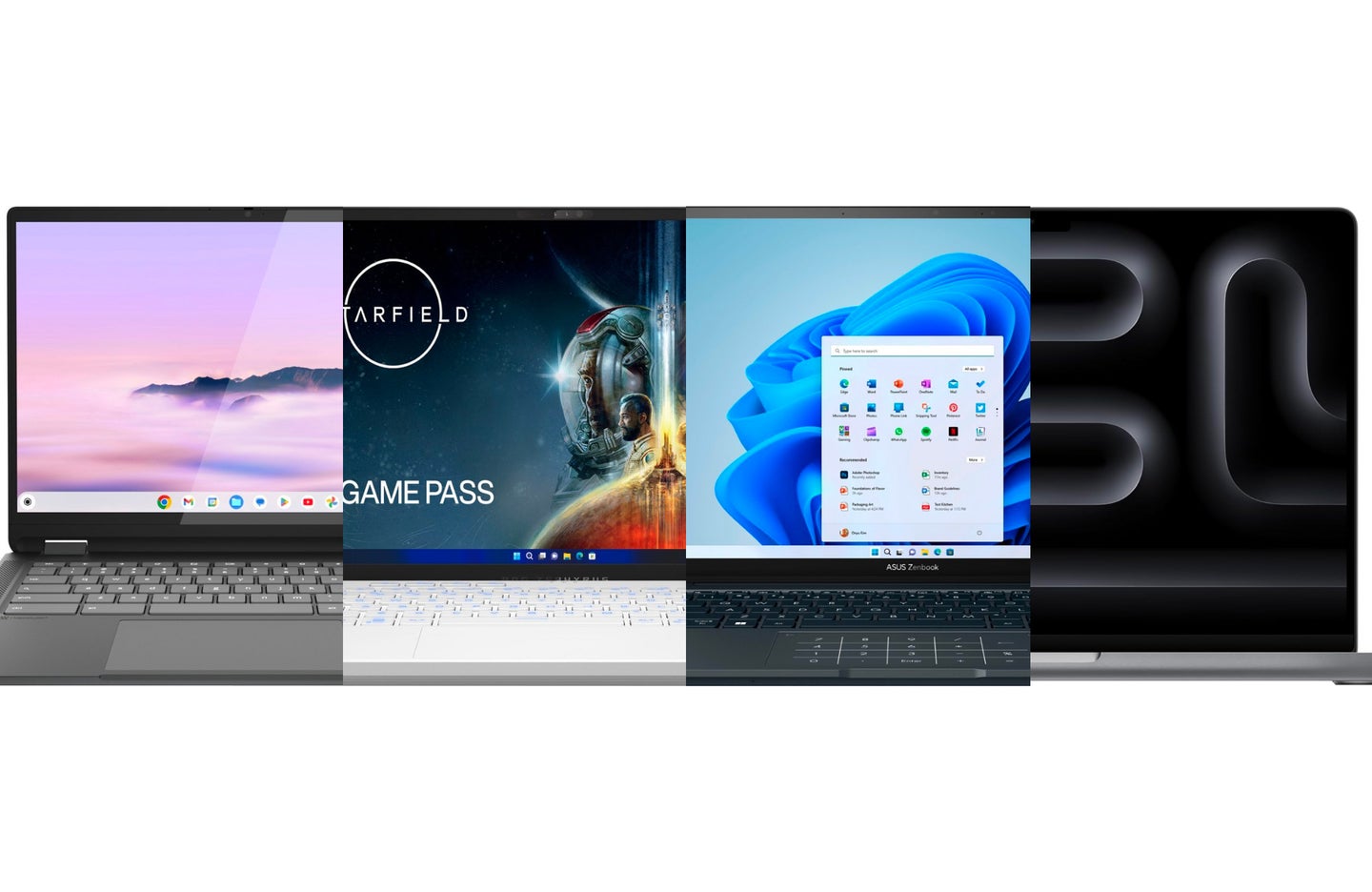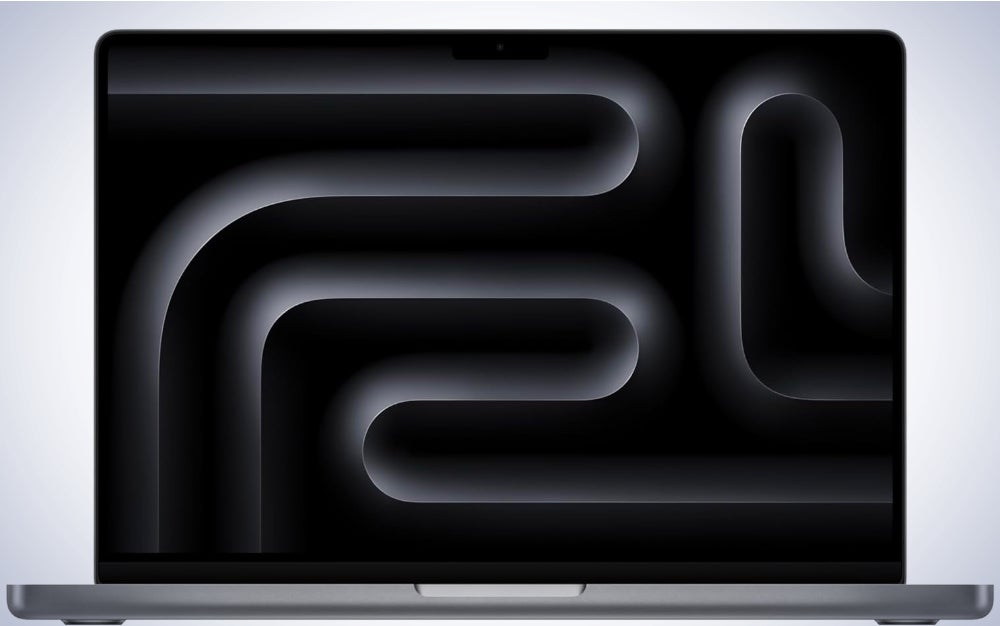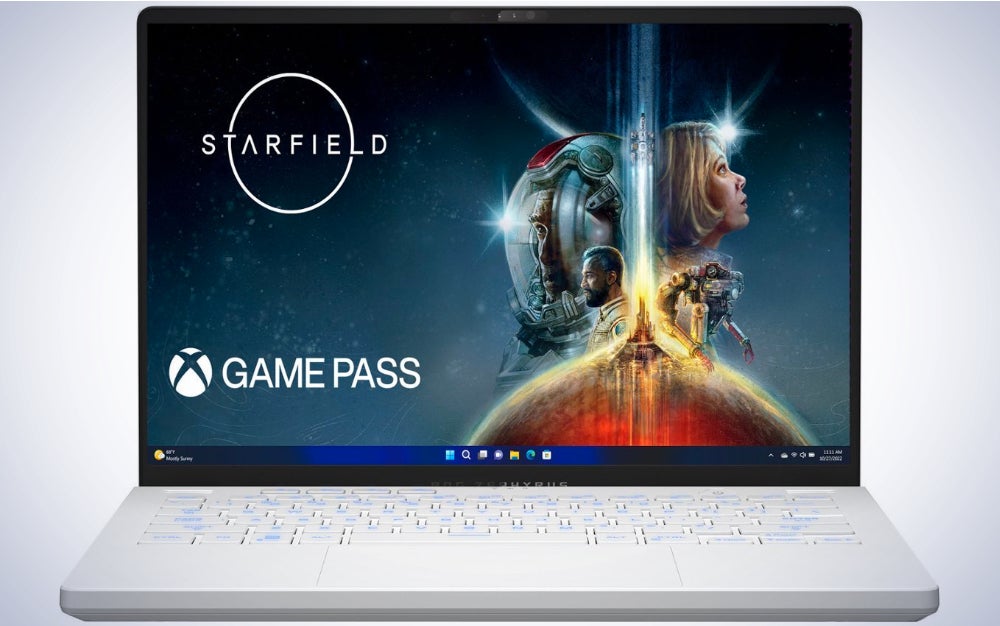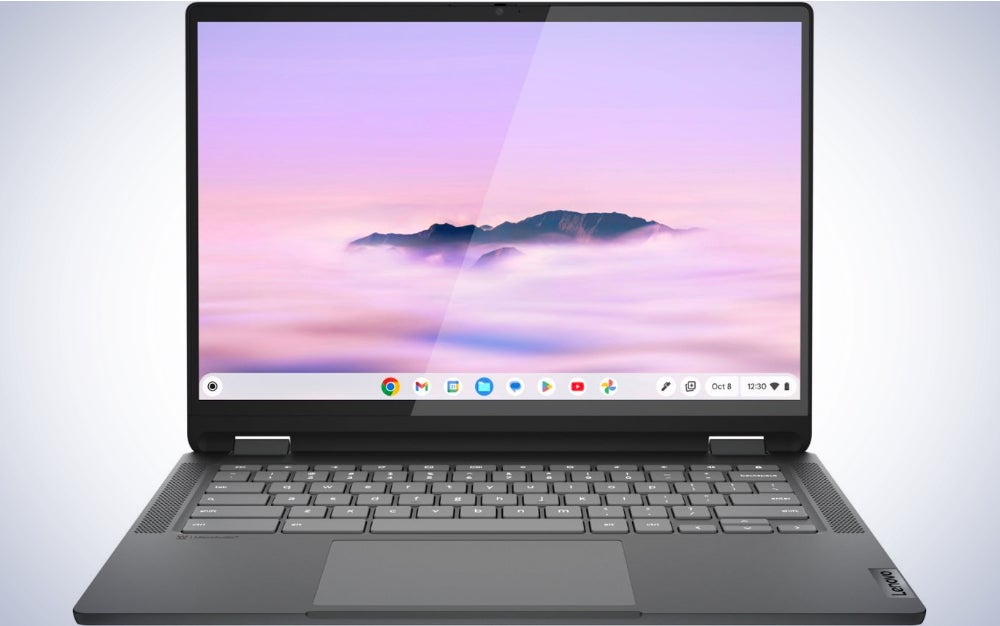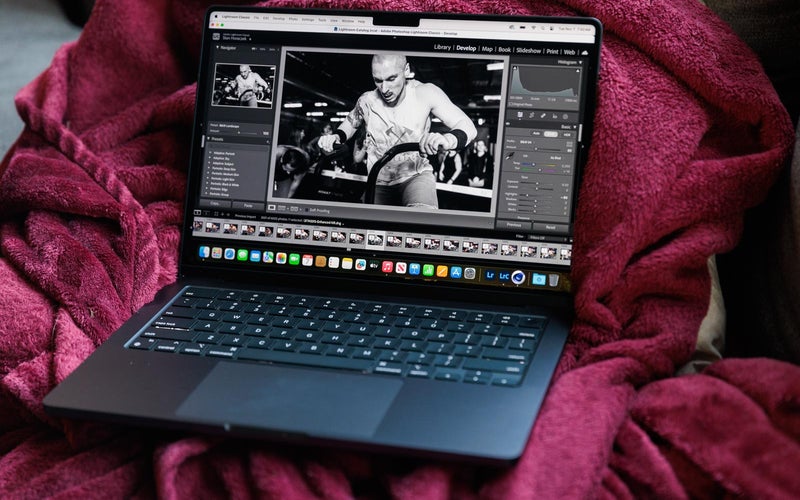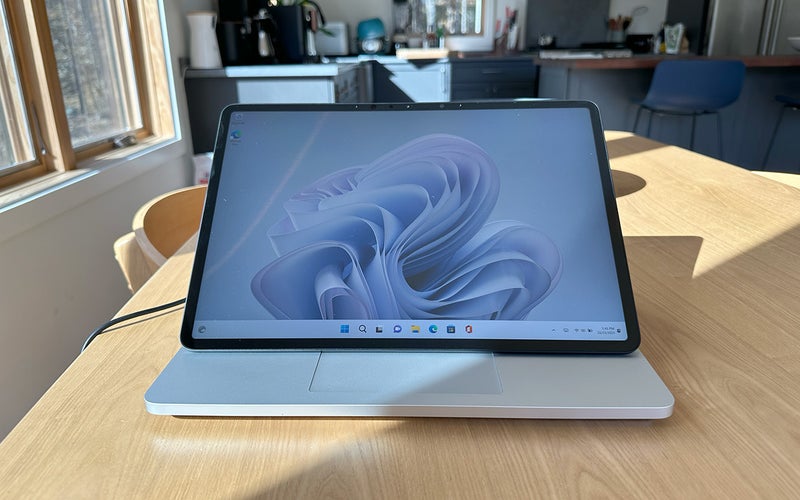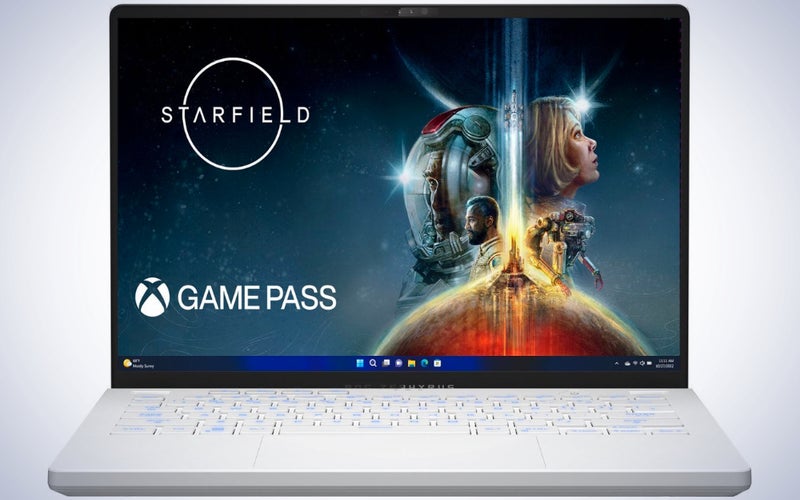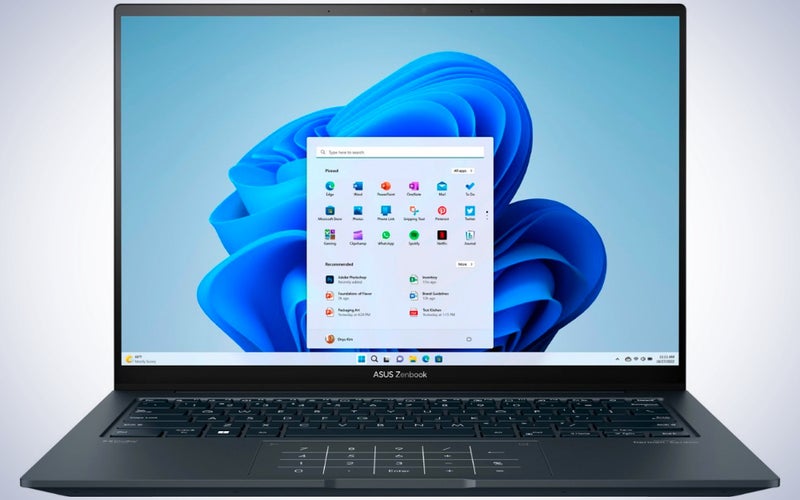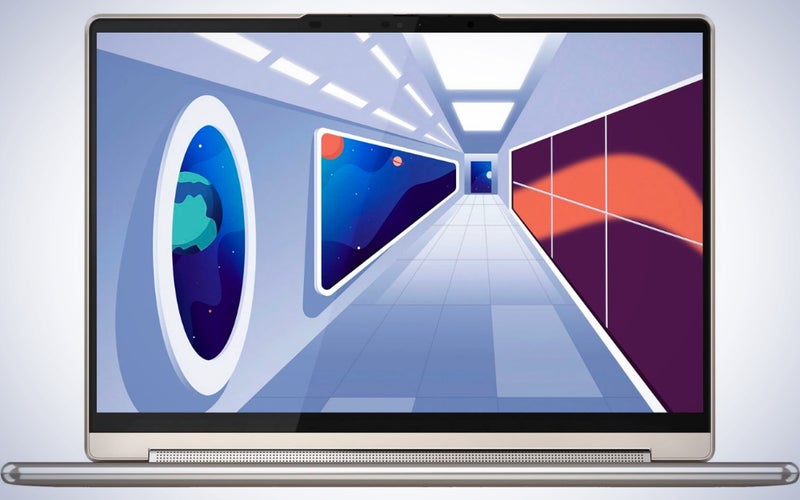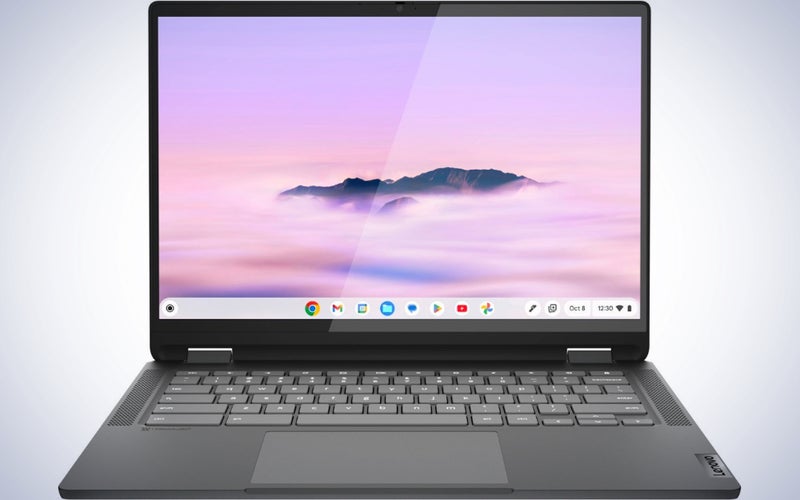We may earn revenue from the products available on this page and participate in affiliate programs. Learn more ›
A 14-inch laptop strikes an excellent balance between portability and usability; it’s not too big or too small while offering the right amount of power without feeling cumbersome. These devices offer excellent mobility and require less desk space, making them an ideal choice for those who work at home and on the go. Compared to 13-inch laptops, which prioritize portability over all else, the 14-inch form factor provides screen real estate to really dig into work, study, and entertainment. The size is also a sweet spot for those seeking high performance for things like gaming without the bulk that comes with larger models. The best 14-inch laptops often strike a nice balance of price, performance, and battery life without making significant compromises, making our selection full of attractive choices for a broad range of users who want versatility from their machines.
- Best overall: MacBook Pro with M3
- Best design: Microsoft Surface Laptop Studio 2
- Best gaming: Asus ROG Zephyrus G14
- Best value: Asus Zenbook 14X
- Best 2-in-1: Lenovo Yoga 9i
- Best budget: Lenovo IdeaPad Flex 5i Chromebook Plus
How we chose the best 14-inch laptops
I’ve used a 14-inch MacBook Pro with an M1 chip for over a year. I chose it because it offers the best balance of size, performance, and portability, perfectly suiting my needs for everyday tasks and creative projects, whether I’m working from home or at a coffee shop. Before settling on a 14-inch laptop, I used a 13-inch model that always felt a bit too compact; I soon realized I was missing the more expansive keyboard and immersive screen. My experience using various laptops and over a decade of writing about these machines has given me valuable insight into what to look for when choosing a new laptop. To find the best 14-inch laptops, I drew from my expertise and prior coverage on Popular Science, honing in on factors like performance, design, portability, battery life, and affordability.
The best 14-inch laptops: Reviews & Recommendations
The 14-inch laptop is in that Goldilocks zone where size, performance, and usability exist in perfect harmony. If you’ve always felt like 13 and 15-inch models weren’t quite your jam—I’m there with you—the laptops in this guide should be a better fit (pun intended). Some of the best models currently available are 14 inches, including the best Windows laptops and the brand-new MacBook Pro with an M3 chip. Our list of the best 14-inch laptops will highlight the best models available and illustrate why this size is a popular choice.
Best overall: MacBook Pro with M3
Stan Horaczek
Specs
- Processor: Apple M3 with 8-core CPU
- GPU: Apple M3 10-core GPU
- RAM: 8GB
- Storage: 512GB SSD
- Connectivity: MagSafe 3, 2 Thunderbolt 3, HDMI, 3.5mm headphone jack, SDXC
Pros
- Fantastic performance
- Beautiful high-resolution display
- Ample ports
Cons
- Starts with 8GB of RAM
The MacBook Pro with M3 is Apple’s newest flagship laptop and the company’s best for creative work. In his review, our executive editor, Stan Horaczek, said it’s the best laptop he’s ever used, praising the performance of the M3 chip and all-day battery life. Horaczek said the machine could complete tasks he wouldn’t even attempt on his M1 MacBook Pro—a testament to the M3 chip’s incredible power, especially when editing graphics, photos, and videos. This means the laptop, much like most MacBooks, is an excellent choice for both creatives like video or photo editors and business people alike (and you can always add an external monitor if your content demands it).
The M3 chip in the MacBook Pro features an 8-core CPU, 10-core GPU, and a 16-core Neural Engine. It comes standard with 8GB of RAM but is configurable up to 24GB. Meanwhile, the stock option has 512GB of storage and is configurable up to 2TB. A six-speaker sound system offers excellent audio performance, and the 3024 x 1964 resolution ProMotion display looks incredible, with support for 1,600 nits of peak brightness. The laptop also features a spacious backlit keyboard with Touch ID and an expansive trackpad that supports multi-touch gestures. It’s thicker than Apple’s MacBook Air at 0.61 inches but is relatively light, weighing 3.4 pounds.
Best design: Microsoft Surface Laptop Studio 2
Billy Cadden
Why it made the cut: The Surface Laptop 2 offers powerful performance, AI smarts, and a long-lasting battery in a unique convertible design.
Specs
- Processor: Intel 13th Generation Core i7
- GPU: Intel Iris Xe, NVIDIA RTX 2000, NVIDIA GeForce RTX 4050, or NVIDIA GeForce RTX 4060
- RAM: 16GB-64GB
- Storage: 512GB-2TB SSD
- Connectivity: 2 Thunderbolt 4, USB-A, microSD, 3.5mm headphone jack
Pros
- Beautiful convertible design
- 120Hz screen refresh rate
- Surface Slim Pen 2 support
Cons
- Poor battery life
With a unique pull-forward touchscreen display and an ultra-premium aluminum build, the Microsoft Surface Laptop Studio 2 features a stellar design. While the original model was ultimately a disappointment—it was way underpowered—the sequel features a more powerful processor and includes a number of upgrades that really elevate the experience. It can also be configured with an Nvidia GeForce RTX 4060 GPU, allowing it to play newer AAA titles on higher settings.
Compared to the original model, the Studio 2 also includes a redesigned trackpad, support for Dolby Vision HDR, more ports, and a 120Hz refresh rate display. The primary purpose of Microsoft’s laptop, though, is to create content. Bringing the display forward gives you a canvas to draw, draft, and edit photos and videos. Unfortunately, the Pen comes separately, so you’ll have to spend more to really push the Studio 2 to its limits.
Best gaming: Asus ROG Zephyrus G14
Asus
Specs:
- Processor: AMD Ryzen 9
- GPU: NVIDIA GeForce RTX 4060
- RAM: 16GB
- Storage: 512 GB SSD
- Connectivity: HDMI 2.0, 2 USB-A 3.2, 2 USB-C
Pros
- Thin and lightweight for a gaming laptop
- Excellent battery life
- Capable of playing the latest AAA titles on high settings
Cons
- 720p web camera
The ROG Zephyrus G14 from Asus delivers fantastic performance without compromising on portability or battery life. This gaming laptop features a 14-inch 165Hz QHD display for smooth animations. It has an AMD Ryzen 9 processor, giving you plenty of power for gaming, Zoom calls, and other intensive tasks. The real star is the Nvidia GeForce RTX 4060 dedicated graphics, which can handle the latest AAA titles, including Bethesda’s Starfield.
Additionally, the Zephyrus G14 has 16GB of RAM and 512GB of storage, along with a combination of ports, including 3.2 Type-A, 2 USB 3.2 Gen 2 Type-C. The laptop also features a battery that can last around 10 hours on a single charge. There are a lot of really good gaming laptops for sale, but the Asus ROG Zephyrus G14 stands out for its impressive excellent performance, display, and long-lasting battery.
Best value: Asus Zenbook 14X
Asus
Specs:
- Processor: Intel 13th Generation Core i5
- GPU: Intel Iris Xe
- RAM: 8GB
- Storage: 512 GB SSD
- Connectivity: 2 Thunderbolt 4, HDMI 2.1, USB-A 3.2, 3.5mm headphone jack
Pros
- Beautiful OLED display
- Sleek design
- Comfortable, satisfying keyboard
Cons
- Fan can get loud under heavy load
For the price, the Asus Zenbook 14X is the best value laptop at this size, offering a beautiful design and stunning OLED display. It’s also pretty powerful, too, allowing you to tackle everyday tasks and some light creative work. The laptop weighs 3.44 pounds with dimensions of 0.66 by 8.88 by 12.67 (HWD) inches, so it’s very portable, verging on ultraportable laptop territory. Overall, it has a minimal look that’s fitting for the office or classroom.
The Zenbook 14X features a unique LED number pad that you can activate on the touchpad. The virtual pad is convenient for inputting data and doing calculations. Meanwhile, the laptop features a decent number of ports, including two Thunderbolt 4, an HDMI port, and one USB-A port. Laptops that are this compact typically skimp on ports but the Zenbook 14X provides a decent selection, so you can connect different peripherals.
Best 2-in-1: Lenovo Yoga 9i
Lenovo
Specs:
- Processor: Intel 13th Generation Core i7 Evo
- GPU: Intel Iris Xe
- RAM: 16GB
- Storage: 512 GB SSD
- Connectivity: 2 Thunderbolt 4, USB-A, USB-C, 3.5mm headphone jack
Pros
- Fantastic OLED touchscreen
- Sleek, sturdy design
- 2-in-1 functionality
Cons
- So-so battery life
Lenovo is no stranger to 2-in-1 laptops—we reviewed one last year—and the latest iteration is among its best. The laptop’s features an exquisite design and a beautiful OLED display that is great for content creation and watching movies. And games look amazing, too—the Intel Iris Xe GPU isn’t the most powerful by any means, but you can still play some of your old favorites.
The rotating speaker bar is a standout feature. It hides in the hinge and ensures the sound is always pointing in your direction, whether you’re in laptop mode or tablet orientation. In fact, the whole design is superb, with rounded edges that offer a look that’s more fun and friendly. And, like we said, the OLED touchscreen display is terrific, with support for the Lenovo Precision Pen 2 for drawing and editing. Lenovo helped pioneer the 2-in-1 market, and it’s still leading the pack with the Yoga 9i.
Best budget: Lenovo IdeaPad Flex 5i Chromebook Plus
Lenovo
Specs:
- Processor: Intel 13th Generation Core i3
- GPU: Intel UHD
- RAM: 8GB
- Storage: 128 GB SSD
- Connectivity: DisplayPort 1.4, USB-A, USB-C, 3.5mm headphone jack
Pros
- Sturdy design
- Big, responsive trackpad
- 2-in-1 functionality
Cons
- Screen could be brighter
Laptops at this price generally don’t offer the most power or the sleekest hardware. But Lenovo’s IdeaPad Flex 5i Chromebook Plus is an exception. The laptop offers decent performance and features a 2-in-1 design, so you can use it like a traditional laptop or flip it to tablet mode. Whatever your preference, the IdeaPad Flex 5i can handle basic tasks with aplomb—and more intensive tasks, too.
Overall, the IdeaPad 5i is an excellent laptop for anyone on a budget; it’s the perfect starter device, offering the right balance of design, performance, and features. You’ll be surprised by what Lenovo’s device is capable of, with enough ports to connect your peripherals. There’s even a slot for microSD cards, allowing you to easily transfer files, photos, and videos.
What to consider when buying a 14-inch laptop
Many of the market’s very best laptops are 14 inches, giving you several options that cater to different preferences and budgets. We’ve rounded up the best options, whether your goal is content creation, entertainment, or both.
Processor
The Central Processing Unit, or CPU, serves as the digital brain in a laptop, ensuring the operation of everything from basic operations to complex computations. The CPU plays a pivotal role in handling tasks like running operating systems, applications, and processing data. Modern Apple laptops feature the brand’s M Series chips, the latest being the M3. These processors combine the CPU, graphics processing unit (GPU), security enclave, neural engine, and shared memory on a single piece of silicon. For Windows laptops, Intel and AMD are the primary CPU makers. Intel is planning to launch a more power processor codenamed Meteor Lake at the end of this year.
When evaluating a laptop processor, it’s essential to consider its clock speed, measured in GHz, and the number of CPU cores. Opting for a processor with higher clock speeds and a greater number of cores ensures better performance when executing resource-intensive tasks like editing photos and videos. If your work involves a mix of multitasking, gaming, or content creation, we recommend purchasing a laptop with a more robust processor. Remember that upgrading a laptop’s processor isn’t possible, unlike in many desktop computers.
Graphics
The GPU is another critical component, one responsible for handling graphics-related tasks. It works alongside the CPU to render and display graphics on the screen, encompassing everything from visual rendering to gaming and video playback. Laptops either feature an integrated or dedicated GPU; integrated graphics, like those from Apple, find the GPU included on the same chip as the CPU.
Laptops designed for gaming generally feature dedicated graphics cards with their own memory. It’s important to note that laptops with dedicated graphics tend to be bulkier and heavier, impacting their portability. Additionally, due to the increased power demand of dedicated GPUs, users may need to be more vigilant about monitoring their laptop’s battery life throughout the day.
Memory
Random Access Memory, or RAM, serves as a temporary place for applications to store data the computer needs to access quickly. We recommend a minimum of 8GB for more basic tasks, like web browsing and emailing. For more demanding tasks, such as editing photos and videos, consider 16GB of RAM or more. The more RAM a laptop has, the more data it can store in memory, impacting how swiftly it executes tasks. The upfront cost of choosing a laptop with more RAM can be pricey, but it may be worth the cost since you generally can’t upgrade after the fact. (And you certainly can’t download more RAM, despite what that popup says.)
Display
When evaluating a laptop’s display, there are several factors to consider, including the screen’s resolution. The resolution of a display determines how many pixels it has; the more pixels, the sharper and more detailed the display will appear. Many of today’s top models feature a resolution of 2K (2560×1440) or 4K (3840×2160). A high-resolution display is beneficial for content creation and multitasking, providing you with more screen real estate. More affordable models feature a 1080p (Full HD) display, which is fine for general use like web browsing, emailing, and school work.
The display’s technology is equally important, with options for IPS (in-plane switching), which offers better viewing angles, or OLED (organic light emitting diode) for vibrant contrast. Some gaming laptops also feature high refresh-rate panels of 120Hz or higher for smoother animations. Accurate color representation is also essential for creative work, allowing you to achieve true-to-life visuals in your images and videos. For reliable color accuracy, look for a screen that covers at least 95% of the sRGB color gamut.
Some laptops support DCI-P3, which provides approximately 26% more color space than sRGB. This extended color range allows for more vivid and saturated colors, making it an excellent choice for tasks that demand vibrant imagery, such as professional photo and video editing.
Storage
Solid-state drives (SSD) have become the standard for data storage, employing more advanced technology than traditional hard drives. SSDs feature no moving parts, enhancing their speed and reliability. That means faster file and application loading times, a feature convenient for gaming and content creation.
For most users, a laptop with a 256GB SSD is enough. However, it’s essential to remember that data accumulates over time, so upgrading to a 512GB or even a 1TB SSD can be a wise investment if it’s within your budget. If you frequently work with larger files, such as photos or videos, opting for a larger SSD can accommodate your workflow. Alternatively, you can use a portable hard drive for additional storage, allowing you to manage large files without filling up your laptop’s hard drive.
Connectivity
Finally, having the right ports on your laptop can enhance its versatility. Traditional USB-A ports were once the industry standard and still serve a vital purpose, but high-bandwidth ports like USB-C and Thunderbolt 4 are becoming more common. These ports enable rapid data transfer, making importing and exporting media more efficient and convenient. An HDMI port allows you to connect your laptop to an external display, and a built-in card reader is handy for transferring media from a camera’s memory card to your laptop. You can use a USB hub to extend your laptop’s connectivity options if it doesn’t have all the necessary ports. However, built-in ports provide the most seamless and hassle-free experience, eliminating the need for additional accessories and simplifying your work setup.
FAQs
Q: Is 14 inches too small for a laptop?
No, a 14-inch display isn’t too small for a laptop. In my experience, a 14-inch display provides enough space for comfortable multitasking while remaining portable. That said, if portability is your primary concern, a 13-inch laptop may be a better fit. Conversely, if multitasking, watching movies, or content creation is your primary concern, you may want to consider a 15-inch laptop. Ultimately, the “right” size for a laptop is subjective and depends on your specific needs.
Q: Are 14-inch laptops good for gaming?
Yes, a 15-inch laptop is good for gaming. This size is more or less the standard for gaming laptops, giving you the perfect balance of size and portability. That said, there is no best screen size for a gaming laptop; it comes down to what aligns with your preferences. There are gaming laptops with 17-inch displays, giving you an experience closer to a traditional desktop and monitor setup. Our guide to the best gaming laptops goes over different screen sizes in-depth, finding that 15 inches is the sweet spot.
Q: How much do 14-inch laptops cost?
That depends on its tech specs. Our recommendations cost between $379 and $1,449.
Final thoughts on the best 14-inch laptops
- Best overall: MacBook Pro with M3
- Best design: Microsoft Surface Laptop Studio 2
- Best gaming: Asus ROG Zephyrus G14
- Best value: Asus Zenbook 14X
- Best 2-in-1: Lenovo Yoga 9i
- Best budget: Lenovo IdeaPad Flex 5i Chromebook Plus
The MacBook Pro with M3 is the best 14-inch laptop, which is no surprise considering it’s the newest entry in its lineup. That said, it’s a pro model, so it’s not designed for casual users. But if you want a laptop that will last for years, the new MacBook Pro is an excellent choice, offering features like Touch ID, MagSafe charging, and long-lasting battery life. If the MacBook Pro with M3 isn’t your jam, some of the market’s best options are 14 inches. You can’t go wrong with any of our picks, so the choice comes down to your preferences and budget.
Why trust us
Popular Science started writing about technology more than 150 years ago. There was no such thing as “gadget writing” when we published our first issue in 1872, but if there was, our mission to demystify the world of innovation for everyday readers means we would have been all over it. Here in the present, PopSci is fully committed to helping readers navigate the increasingly intimidating array of devices on the market right now.
Our writers and editors have combined decades of experience covering and reviewing consumer electronics. We each have our own obsessive specialties—from high-end audio to video games to cameras and beyond—but when we’re reviewing devices outside of our immediate wheelhouses, we do our best to seek out trustworthy voices and opinions to help guide people to the very best recommendations. We know we don’t know everything, but we’re excited to live through the analysis paralysis that internet shopping can spur so readers don’t have to.
